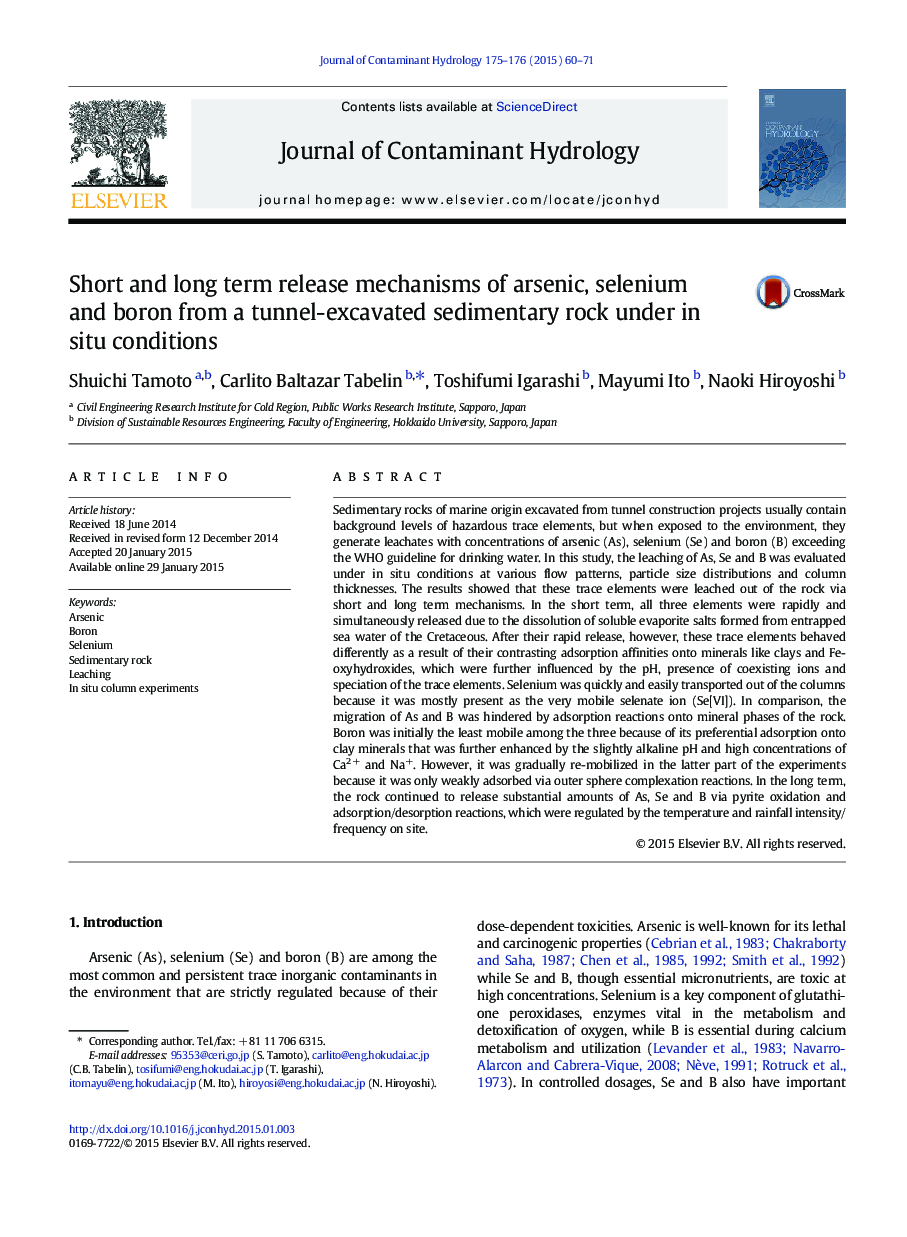| کد مقاله | کد نشریه | سال انتشار | مقاله انگلیسی | نسخه تمام متن |
|---|---|---|---|---|
| 4546479 | 1627033 | 2015 | 12 صفحه PDF | دانلود رایگان |
• The short term migration of As, Se & B is controlled by dissolution & adsorption.
• The long term migration of As, Se & B is controlled by pyrite oxidation & adsorption.
• B was the least mobile initially, but was gradually remobilized with time.
• The leachabilities of the trace elements in situ followed this order: Se > B > As.
Sedimentary rocks of marine origin excavated from tunnel construction projects usually contain background levels of hazardous trace elements, but when exposed to the environment, they generate leachates with concentrations of arsenic (As), selenium (Se) and boron (B) exceeding the WHO guideline for drinking water. In this study, the leaching of As, Se and B was evaluated under in situ conditions at various flow patterns, particle size distributions and column thicknesses. The results showed that these trace elements were leached out of the rock via short and long term mechanisms. In the short term, all three elements were rapidly and simultaneously released due to the dissolution of soluble evaporite salts formed from entrapped sea water of the Cretaceous. After their rapid release, however, these trace elements behaved differently as a result of their contrasting adsorption affinities onto minerals like clays and Fe-oxyhydroxides, which were further influenced by the pH, presence of coexisting ions and speciation of the trace elements. Selenium was quickly and easily transported out of the columns because it was mostly present as the very mobile selenate ion (Se[VI]). In comparison, the migration of As and B was hindered by adsorption reactions onto mineral phases of the rock. Boron was initially the least mobile among the three because of its preferential adsorption onto clay minerals that was further enhanced by the slightly alkaline pH and high concentrations of Ca2 + and Na+. However, it was gradually re-mobilized in the latter part of the experiments because it was only weakly adsorbed via outer sphere complexation reactions. In the long term, the rock continued to release substantial amounts of As, Se and B via pyrite oxidation and adsorption/desorption reactions, which were regulated by the temperature and rainfall intensity/frequency on site.
Journal: Journal of Contaminant Hydrology - Volumes 175–176, April–May 2015, Pages 60–71
